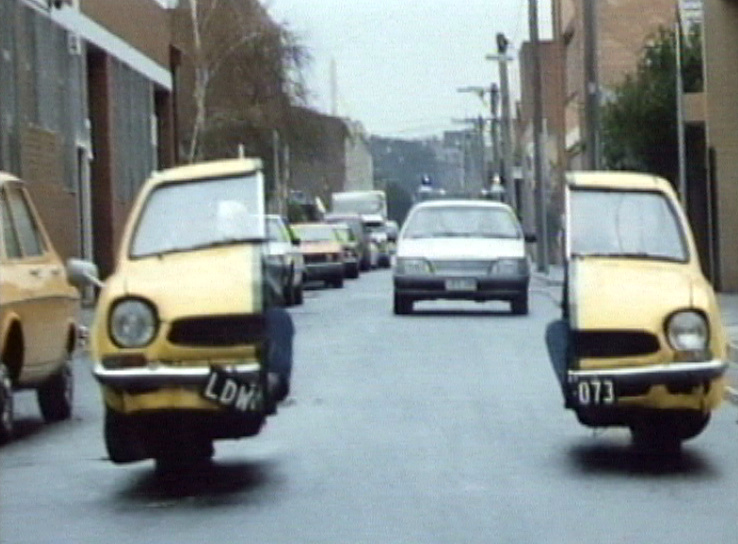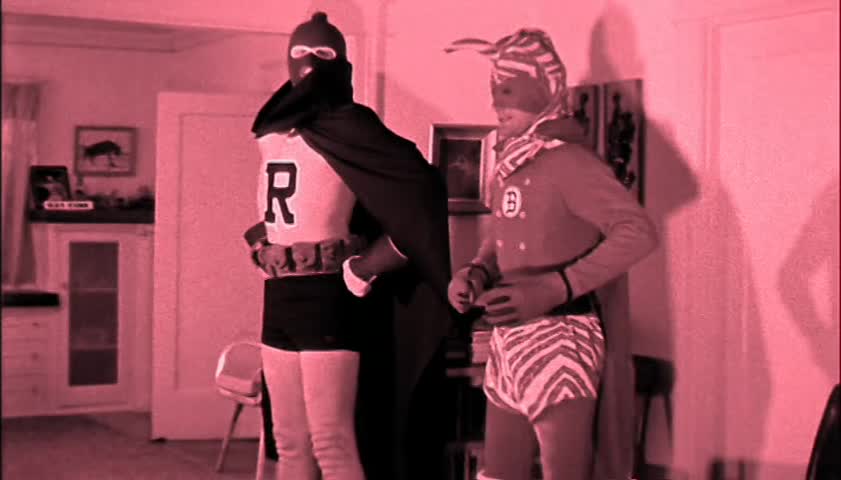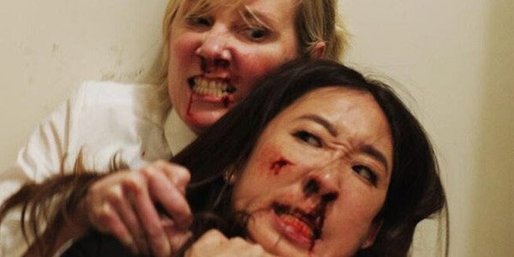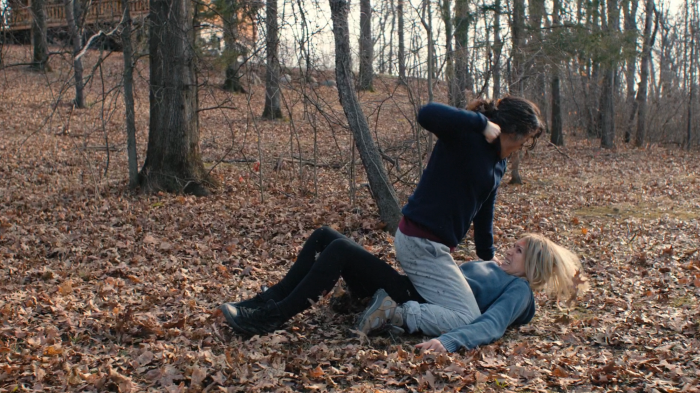We lost two legends this week.
George R Romero passed away at the age of 77. Romero was most well known for popularising the Zombie movie genres with his 1968 Night of the Living Dead which began in my mind one of the greatest trilogies in movie history (having spent seven years working in the Meadowhall shopping centre in Sheffield I have a special place in my heart for the original Dawn of the Dead). Funnily enough the very first film I featured in my movie club series was his 1981 cult favourite Knightriders.
Romero was one of the greats and there are worse ways to spend a rainy afternoon than to revisit his catalogue. RIP Mr Romero.

Martin Landau passed away this week at the age of 89. Like many young UK Sci Fi geeks born in the seventies I first saw Landau on the amazing for it’s time Space: 1999, a British television series. The Star Trek styled show featured Landau as the Captain of a moonbase that ends up travelling through space when a nuclear waste accident sends the moon out of Earth’s orbit. He also became well known to British viewers as a regular on the first incarnation of the Mission Impossible franchise, the reruns of which on BBC-2 in the 80’s I absolutely adored.
Landau had been appearing in films since the 50’s and received Academy Award nominations for his roles in Tucker: The man and his Dream in 1988 and Crimes and Misdemeanours in 1989. However the role that finally won him the award for best supporting actor was in Ed Wood in 1994. Landau’s amazing portrayal of an ageing Bela Lugosi was moving, tragic and sometimes hilarious and I’m going to be sure to include Ed Wood in a future article.
RIP Mr Landau.

Same rules as always for the Movie Club. I pick four interesting films in the following categories: Black and White, Foreign language, a film from the last ten years and a general choice which is normally a cult classic or a lesser known film.
Malcolm (1986)

Of all the film industries around the world one of my favourites is the one found in Australia. With a rich history of over a hundred years of cinema it’s produced a diverse range of genre and independent movies, giving birth to critically and commercial successes as well as given it’s homegrown talent a platform to attain global stardom. Not to be impeded by working with smaller budgets, Australian film makers have made many creatively entertaining and challenging movies.
“Malcolm” was a film I stumbled across in an early evening slot on BBC-2, sometime in the late 80’s (BBC-2 being the secondary channel has traditionally enjoyed the freedom to experiment with more niche interests and I vaguely remember savouring a season of Australian movies when I was broadening my film tastes.) and was immediately enchanted by it.
Malcolm is a socially awkward loner with a condition resembling Autism, but he’s also a mechanical genius and has filled his home with amazing gadgets and inventions. Malcolm loses his job at a tram yard having built himself a small one man tram which he actually takes out on the tram lines. With no money coming in to pay for his weekly shopping (Malcolm is unable to understand the concept of money or why his milk is no longer being delivered) his local shopkeeper tries to help by getting him to take in a lodger.

The lodger Malcolm ends up with is Frank a crook recently released from jail, who initially seems to take advantage of Malcolm’s naivety by living with him for free and moving in his girlfriend Jude. However the couple becomes the friends and family his life has been missing and he even appears to come out of his shell somewhat because of them.
When he becomes intrigued by Frank’s criminal exploits, Malcolm begins building gadgets geared towards robbing banks, starting with a remote controlled car armed with a gun which he controls from home to attempt to initiate a hold up.
When Frank finds out about Malcolm’s projects they become a team with a series of imaginative raids, using such devices as a Honda that splits in two to avoid police and remote controlled ashtrays (Steve’s line “act natural!” when a security guard passes the bins is hilariously dry). Eventually the team build towards a intricate robbery of a bank deposit vault for a quarter of a million dollars payoff.
Malcolm is a gentle heist movie, which due to the non violent methods involved has you rooting for the team to get away. The gadgets used in the robberies are ingenious and cartoon like in their entertainment (if you ever played the boardgame MouseTrap you’ll have a sense of the contraptions involved). It’s a nicely, heartwarming comedy, strangely sweet as through the criminal exploits Malcolm gains a degree of companionship and enjoyment from his life.

Ratfink A Boo Boo (1966)

In the late eighties the UK television channel Channel Four with it’s remit to creating alternative tv shows, began airing The Incredibly Strange Picture show. Running for two seasons and hosted by Cult Movie aficionado Johnathan Ross, the series was made up of short documentaries of film makers outside of mainstream cinema. Through this show I was introduced to the likes of John Walters, Sam Raimi, Russ Meyer, there was even an episode dedicated to the films of Mexican wrestler El Santo (most of the episodes you can track down on Youtube, including one on George Romero).
It was a great show, but one episode in particular caught my imagination and led me to seek out and buy a VHS tape of what turned out to be probably the most poorly made, cheap movie I’ve ever actually shelled money out of. It’s also one of the greatest curiosities of a film I’ve ever encountered, purely due to the story behind it.
Ratfink A Boo Boo was made by supercheap film maker Ray Dennis Steckler, the man behind “”The Incredibly Strange Creatures Who Stopped Living and Became Mixed Up Zombies.” Steckler who made his movies without a script and would shoot scenes in order, making the narrative up as he went along, started off making the film as a straight thriller. Entitled “The Depraved” the film is built around Steckler’s girlfriend (Steckler would employ friends and family in his films to cut costs) being harassed, stalked and finally kidnapped by a gang of psychopaths.
This is the story for the first forty minutes, with some imaginatively shot scenes but filled with the hallmarks of any Steckler movie such as cheap production values, strange pacing, awful acting and lots of musical numbers as filler. But then Steckler began getting bored with making the thriller and at a key moment in the story wondered what it would be like if Batman and Robin showed up in his movie. So in a complete turn around in the tone of the movie Steckler made his two lead actors step into a closet and turn themselves into the superheroes Ratfink and Boo Boo.
“Remember Boo Boo, we only have one weakness,”
“What’s that Ratfink?”
“Bullets!”

The films is suddenly turned into a Batman and Robin spoof, with the two donning unsettling looking, weird and cheap costumes and setting off on a motorcycle and sidecar to initiate a very long chase scene in pursuit of the kidnappers.
Watched cold I’m sure this makes for an incredibly bizarre viewing experience, even more so when in the climatic fight scene the duo cross an escaped Gorilla credited as Zorba the Swinging Ape. Yet despite the cheap production values (at times it resembles a home made movie, which you could argue it is) and the over long scenes of filler, I find the existence of Ratfink a Boo Boo totally endearing. I appreciate the passion to make films on such little money and this Gonzo attitude of “fuck this I’m just going to make it a superhero film” mid film I find hilariously admirable.
Likewise the legend that the film title came about because the person making the titles forgot to add the “n” and “d” in “and” and Steckler refused to pay to have them altered so “Ratfink and Boo Boo” became “Ratfink A Boo Boo.” Sadly Steckler has denied this story and claimed the title came about because that’s how his young daughter would say the film. In any case the name “Ratfink A Boo Boo” has a pleasing 60’s rockabilly feel to it.
Also hilarious is the final scene where Ratfink and Boo Boo ride through town on their motorbike and sidecar to a rapturous parade in their honour. In true opportunistic Steckler fashion, he simply rode onto and hijacked a real life parade, filming themselves waving to the probably bemused crowds before they got caught.
Ratfink A Boo Boo is one of those films that defies being given a rating or critiqued too intensely as to do so is to miss the point of it’s appeal and cult following. It’s just a wonderful curiosity, a refreshingly unabashed display of sheer moviemaking balls.
And if anyone ever made a set of Ratfink A Boo Boo figures I would buy the shit out of them.

Train to Busan (2016)

I’ve started to groan when ever I see another zombie apocalypse movie. Yet while I feel like I’m bored of them, I still watch them and time and again find myself surprisingly entertained by them.
“Train To Busan” however is several steps above any other zombie movie for the last ten years.
Set in South Korea, the film focuses on the passengers of a train, which unknown to them starts it’s journey to Busan just as zombie virus is breaking out all over the city. An infected woman escaping from the carnage makes it onto the train and after turning to a zombie attacks the other passengers and spreads the virus the amongst them.
On the face of it the film has all the standard tropes of a zombie survival movie. The zombie plague spreads through bites. In true survival horror fashion the survivors come from a variety of backgrounds, personalities and backstories, from the single father with his daughter, to the young baseball team and cheerleaders, a bickering couple, a homeless man and the obligatory selfish arsehole who ends up dividing and causing conflict between the survivors.

However while fairly routine in the concepts, the film excels because it does everything so well. The zombies are genuinely frightening, especially because of their fast spasm like movements and their jerky bone bendning transformations into their zombie state is really unsettling. Lkewise the scenes of their attacks are sheer carnage. An especially frantic scene is the train’s first stop where the passengers embark expecting sanctuary at a quarantine zone only to find the army there has already been infected. The retreat and battle back to the train absolutely pounds the hell out of your heart.
The tension wracks up throughout the film as the passengers fight to keep the zombies contained in the carriages and there is a real sense of claustrophobia because of it. The drama of the situation is maintained due to the varieties of crisis moments the survivors have to endure, such as the groups becoming separated at one point with a carriage full of zombies between them, leading to a battle for a father and husband to reach their loved ones. Later our main group while fending off a zombie attack are blocked from getting into the safety of a cabin by a group refusing them entry for fear they’ve been infected. As dangerous as the confines of the train is, the necessity to leave proves just as terrifying with armies of zombies awaiting them.
Train to Busan was an incredible success and in terms of audience numbers was Korea’s most successful movie of all time. It’s an amazing film, that proves no concept is ever truly tired providing the films that come out make the most of the genre.

Cat Fight (2016)

Incidently putting “catfight” into a search engine to find images for an article brings up some very weird shit.
So if I tell you that I want to recommend a little know independent movie with an arthouse vibe, I’ve probably already lost you.
If I try to win you back by saying it can be read as a satire on the selfishness of American society, I may peak your interest just a little but probably not much.
If I go on and insist it’s a clever black comedy on the futile nature of violence and those who’s hatred leads them to being trapped in a never ending circle, you’ll probably roll you eyes and dismiss the film on grounds it sounds pompously intellectual and preachy.
But I bet if I tell you the film features two women knocking the living shit out of each other in some of the most wild, brutal, swinging for the fences fight scenes ever then I’ll bet that will getting you watching. Even more astounding, these aren’t two tacky, low rent actresses making a cheap exploitation movie. These are two talented and seasoned actresses in Sandra Ho (playing Veronica a rich housewife who likes her liquor) and Anne Heche (playing Ashley, a bitter, struggling artist), absolutely going at it in surreal, cartoon like violence filled with exaggeratedly loud punch noises accompanying every blow.
You’re about to watch Catfight and whether you love it or hate it, you’ve never seen anything quit like it.
Catfight is a deliciously dark comedy that begins with Ashley and Veronica at fragile moments in their lives running into each other at a party having not seen each other since their College days. The conversation becomes goes badly and some misunderstandings combined with issues with their own lives leads to some tense exchangesand the meeting descends into a bitchy display of one upmanship.
The two end up in a vicious fight in a stairway, which for the loser ends with life changing consequences. This begins a violent feud between the two that spans five years and a cycle of violent encounters that will ultimately change both their lives.

What makes Catfight work is the performances of Ho and Henche, who are able to sell their unlikable natures when we first meet them and the consequences that the initial fight in the stairway has for both of them. One is led to ruin while the other feeds off the confrontation to inspire herself to attain success. Your sympathies switch throughout the film through the falls in fortunes both endure due to the feud (although to be honest although you’r probably not meant to be rooting for one over the other Henche has something inherently more unlikable about her character).
The film does work as a satire on American society. The two of them are very similar people, in that they are selfish, self absorbed and struggling to realise that what they need to be happy is actually right there but they realise it only when they have lost it. Likewise both have underlings that they treat poorly yet these are the people they can rely on when both hit rock bottom.
There is also a critique on the futility of violence and the never ending cycle of destructiveness and tragedy that it causes, with their own feud echoed with news reports of a fictional never ending war America has found itself engaged in over in the Middle East. There’s also commentary on the vacuous nature of 21st century sensibilities with an hilarious scene where Ashley’s partner (played Alicia Silverstone) gleefully rejects the presents offered to her at a baby shower because they don’t meet her standards of political correctness.
Catfight has had mixed responses. It’s either a movie you’ll love or hate, but it’s one that you won’t be able to forget.

Next time on Couchzone Movie Club I’ll be taking a break from the regular format. In order to honour the release of Christopher Nolan’s Dunkirk I will be revealing some of my favourite War movies.
So until that cheery edition, see ya next time
Dazza






